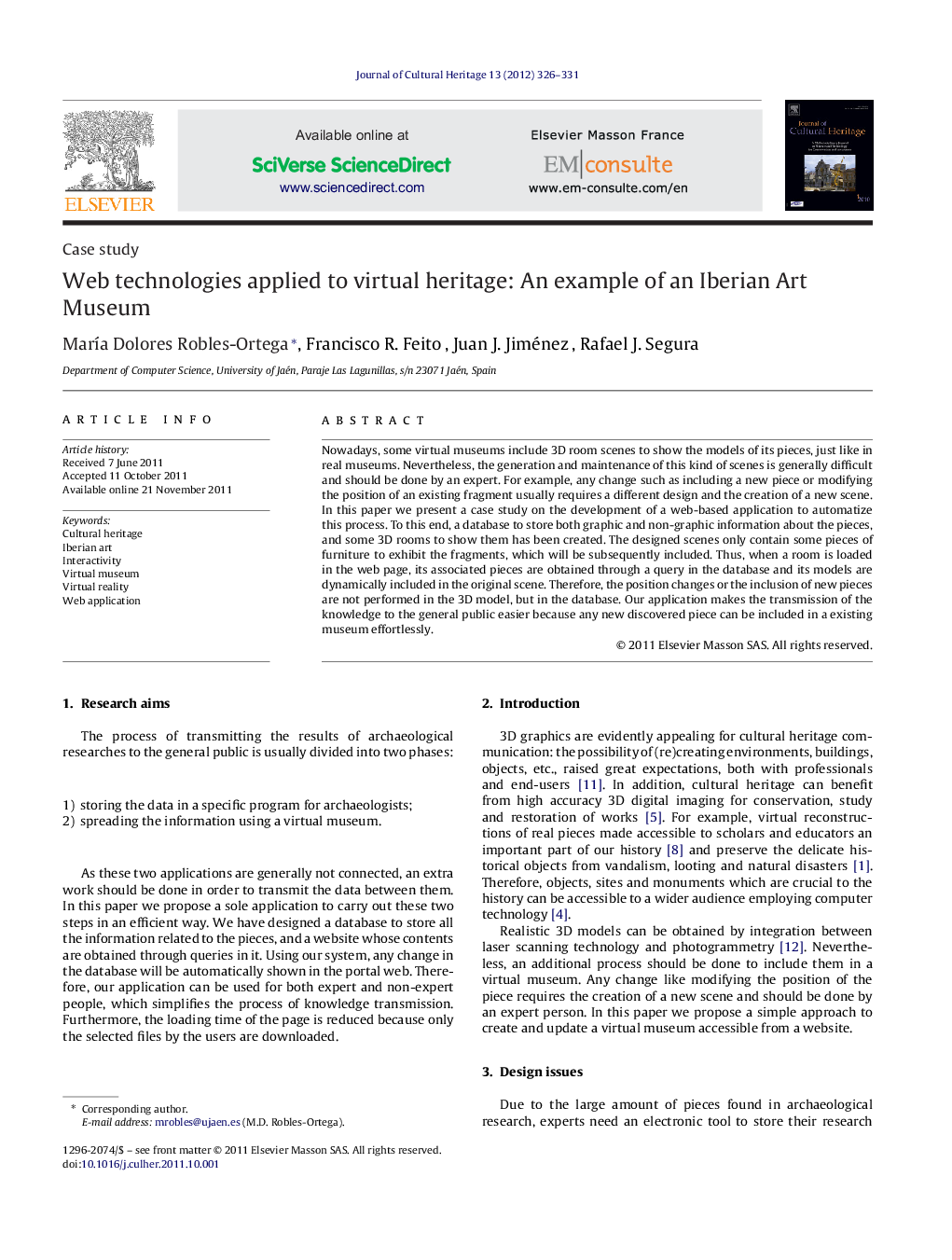| Article ID | Journal | Published Year | Pages | File Type |
|---|---|---|---|---|
| 1038357 | Journal of Cultural Heritage | 2012 | 6 Pages |
Nowadays, some virtual museums include 3D room scenes to show the models of its pieces, just like in real museums. Nevertheless, the generation and maintenance of this kind of scenes is generally difficult and should be done by an expert. For example, any change such as including a new piece or modifying the position of an existing fragment usually requires a different design and the creation of a new scene. In this paper we present a case study on the development of a web-based application to automatize this process. To this end, a database to store both graphic and non-graphic information about the pieces, and some 3D rooms to show them has been created. The designed scenes only contain some pieces of furniture to exhibit the fragments, which will be subsequently included. Thus, when a room is loaded in the web page, its associated pieces are obtained through a query in the database and its models are dynamically included in the original scene. Therefore, the position changes or the inclusion of new pieces are not performed in the 3D model, but in the database. Our application makes the transmission of the knowledge to the general public easier because any new discovered piece can be included in a existing museum effortlessly.
